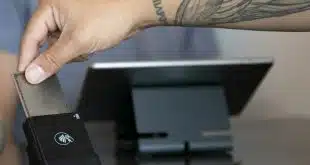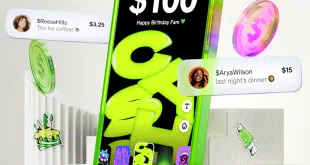Left for dead as recently as two years ago, the concept of mobile payments in physical stores is staging a remarkable resurrection.
The signs are everywhere. In April, PayPal Inc. said it will adopt near-field communication (NFC) after years of mocking the technology, which enables wave-and-pay transactions with smart phones, by saying its acronym stood for “not for commerce.” And earlier Samsung Electronics Co. Ltd. shelled out a reported $250 million to buy LoopPay Inc., a startup whose tech allows phones to work with mag-stripe terminals.
Around the same time, Google Inc. acquired some key technology from Softcard, the NFC-based mobile-payments venture backed by three of the country’s biggest mobile carriers. As part of the deal, the carriers agreed to load the 4-year-old Google Wallet app into the Android phones they sell.
All this, of course, followed the debut of Apple Inc.’s Apple Pay, which has almost single-handedly brought mobile payments in stores back from the dead by popularizing NFC with consumers, merchants, and issuers.
Now comes research that documents just how far mobile proximity payments—transactions made using mobile devices inside brick-and-mortar stores via NFC, quick-response codes, or LoopPay’s mag-stripe emulation—are going to go and why they’re so important.
These payments totaled $3.2 billion last year, according to a report released last month by Aite Group LLC, a Boston-based research firm. This year, look for that number to soar to $7.5 billion, Aite says.
Nearly all of that is U.S. volume, and anywhere from 80% to 90% of it will be accounted for by Apple Pay, says Thad Peterson, the Aite senior analyst who wrote the report, “Mobile Proximity Payments: A Disruption in the Force.”
But the really big growth comes after that: $22.4 billion in 2016, growing to $487 billion by 2020 as the Google, PayPal, and Samsung offerings kick in, Peterson says. Google is expected to announce its revamped Google Wallet this month during its annual developer conference, while Samsung Pay is expected to launch by this fall. PayPal has said it will launch its new, NFC-capable wallet by year’s end.
It looks like the end of years of frustration. Proximity payments in-store “has been a vision that’s been around since the dawn of the smart phone, but it’s been nearly impossible to implement,” says Peterson. “Now the tools are around.”
The “tools” include mobile devices, which refer not only to the newest iPhones but also to Android-based phones. But they also include new NFC capability at the point of sale as merchants increasingly adopt terminals equipped for EMV chip cards.
Most, if not all, of these devices come with NFC built in, a capability most merchants will eventually activate. As Peterson says, Apple Pay has made NFC “a de facto standard.”
Still, Aite’s forecast is markedly more optimistic than a set of projections for mobile proximity payments that a rival payments researcher, Javelin Strategy & Research, released a week earlier. While the two firms’ forecasts are close through this year, they begin to diverge in 2016, with Javelin projecting $12.7 billion versus Aite’s $22.4 billion.
In 2019, the last year of Javelin’s forecast, Aite has in-store mobile payments ringing up $226.6 billion of volume, compared to $54 billion according to Javelin.
Peterson argues the importance of mobile proximity payments lies in the technology’s security compared with mag-stripe cards. With tokenization and one-time cryptograms built in, new programs have “taken the security of the transaction up to a whole new level,” he says.
But user adoption will be crucial for Aite’s forecast to come true. In this regard, says Peterson, it helps that wave-and-pay in the store will be hugely more attractive to users than the typical EMV experience, which involves sticking a card into a terminal slot and waiting for the device to read the card’s chip.
“The user experience is degraded by EMV,” Peterson argues, which “lowers the bar” for mobile payments.
Indeed, the user experience is more important for adoption than even rewards and other incentives, Peterson notes. “I’m skeptical about loyalty and rewards,” he says. “Nobody has shown me how to seamlessly integrate it at the point of sale, so I don’t think it’s going to drive usage significantly.”
—John Stewart




